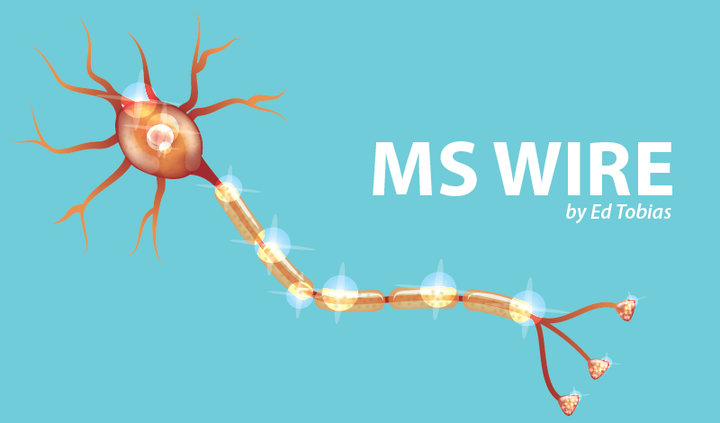MS News that Caught My Eye Last Week: Lemtrada Satisfaction, Limiting Tysabri’s PML Risk, MS and Pregnancy, Infusions vs. Pills

#AANAM – RRMS Patients Switching to Lemtrada Report Greater Satisfaction with Treatment and Improvements in Quality of Life
I’m a self-proclaimed secondary progressive, rather than a remitting, multiple sclerosis (MS) person. But a year after round two of Lemtrada (alemtuzumab), I can agree with this report. Several of my symptoms are better, most notably my bladder control. So yes, my life has improved and I can attribute that to Lemtrada.
Patients with relapsing-remitting multiple sclerosis (RRMS) who switched to infusions with Sanofi Genzyme’s Lemtrada (alemtuzumab) report increased satisfaction with treatment and improvements in health-related quality of life, according to preliminary data from two ongoing clinical studies.
Those findings were presented May 7 at the 2019 American Academy of Neurology (AAN) Annual Meeting in Philadelphia.
Click here to read the full story.
***
#AANAM – Research Suggests Extended Interval Dosing of Tysabri Can Decrease Risk of PML
I also had a good experience when I was treated with Tysabri (natalizumab). When my JC virus titer score began to rise, increasing my PML risk, my treatments were reduced from once a month to every other month. That allowed me to spend an additional two years on this useful disease-modifying therapy. This study indicates that making that dosing change was the right thing to do.
New data suggests that treatment with Tysabri (natalizumab) in an extended interval dosing regimen is associated with a significantly lower risk of progressive multifocal leukoencephalopathy (PML) in patients with multiple sclerosis (MS), compared with the standard interval dosing.
The data was presented by Lana Zhovtis Ryerson, MD, on May 7 at the 2019 Annual Meeting of the American Academy of Neurology (AAN), in a presentation titled “Reduced risk of progressive multifocal leukoencephalopathy (PML) associated with natalizumab extended interval dosing (EID): updated analysis of the TOUCH Prescribing Program database.”
Click here to read the full story.
***
#AANAM – Research Suggests Misconceptions About MS Risk in Pregnant Women
Many women who have MS are concerned about becoming pregnant. This study provides another set of facts they should consider when making their decision about having a baby.
New research suggests that even though pregnant women with multiple sclerosis (MS) are often viewed as high-risk by their physicians, pregnancy does not seem to increase the likelihood of adverse obstetrical outcomes for those patients or their babies.
The research was presented at the 2019 Annual Meeting of the American Academy of Neurology (AAN) in Philadelphia (May 4–10), in an oral presentation titled “Pregnancies in Women with Multiple Sclerosis: Perception of High Risk Among Health Care Providers. Interim Data from PREG-MS Cohort.”
Click here to read the full story.
***
#AANAM – IV Therapy May Be More Effective Than Oral Treatment in Younger RRMS Patients, Research Suggests
I’m no longer young, but I’ve been treated with both infusions and an oral DMT. Though both were effective for me, I’ve always felt that infusions were superior. Oral meds, however, are so much easier for the patient to take. It must be very tough for a younger person to decide between efficacy and ease of use.
Infusible disease-modifying treatment — that is, therapies given intravenously — might have greater benefits for younger people with multiple sclerosis (MS) than oral ones, new research suggests.
The research was presented at the American Academy of Neurology (AAN)’s annual meeting (May 4-10) by Brandi Vollmer, MPH, a research assistant in neurology at the University of Colorado. The presentation was titled “Higher Efficacy Therapies Appear to have a Disproportionately Larger Effect in Younger Patients with Multiple Sclerosis.”
Click here to read the full story.
***
Note: Multiple Sclerosis News Today is strictly a news and information website about the disease. It does not provide medical advice, diagnosis, or treatment. This content is not intended to be a substitute for professional medical advice, diagnosis, or treatment. Always seek the advice of your physician or other qualified health provider with any questions you may have regarding a medical condition. Never disregard professional medical advice or delay in seeking it because of something you have read on this website. The opinions expressed in this column are not those of Multiple Sclerosis News Today or its parent company, Bionews Services, and are intended to spark discussion about issues pertaining to multiple sclerosis.







Esther Cochrane
What about ppms!!!!!!!
Gary Wien
Ed,
I'm SPMS as well and had round one of Lemtrada in January. I was wondering when you think you first noticed significant changes or improvement after going through Lemtrada?
Did you notice anything after round one? Or did you first notice positive changes after round two?
Thanks.
Ed Tobias
Hi Gary,
I noticed some changes seven or eight months after Round 1, but it was a roller coaster. I've tracked my journey pretty specifically in my MS News Today column: "The MS Wire." If you use the search function of this web site and type in "Tobias Lemtrada" it will bring up all of my columns about this med. Scroll through them and you should be able to get a really good picture of my experiences.
Caution: Like MS, everyone's Lemtrada experiences are different. One size doesn't fit all.
Best of luck with your treatment,
Ed